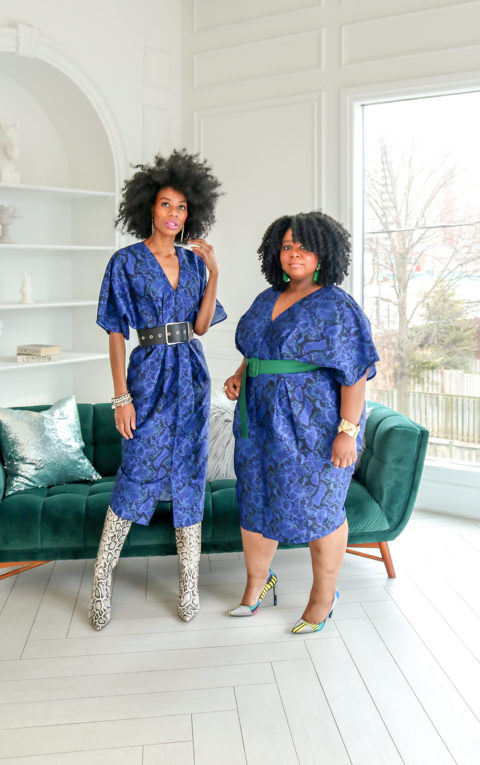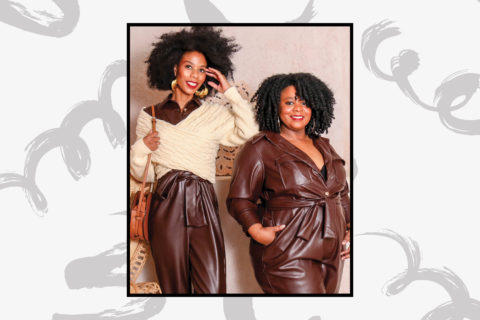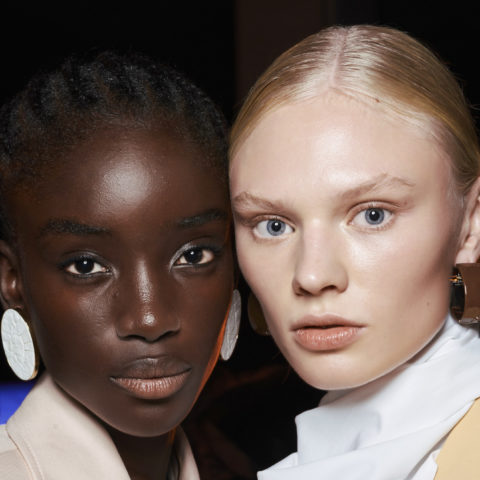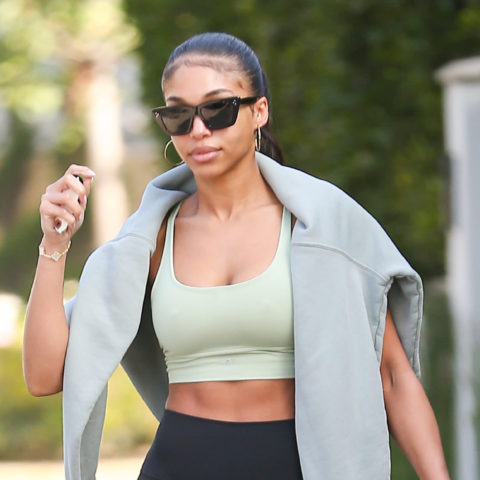Texture Talk: For Leslie and Gail Thompson, Voluminous Curls Are a Powerful Symbol of Self-Expression
Welcome to Texture Talk, a weekly column that celebrates and deep dives into the dynamic world of curly hair, from crowns of curls that are free flowing to strands that are tucked away in a protective style.
In this day and age, wigs have become a staple accessory, especially within Black beauty culture. More than ever before, women—celebs included—wear them proudly and openly praise them for their versatility. Just take it from Montreal-bred, Toronto-based sisters Gail and Leslie Thompson.
For Leslie, hairpieces are timeless and chic protectors that save her own fragile 4C curls from daily styling and breakage. And for Gail, the opportunity to add variety without any major commitment, like her current crown of perfectly shaped corkscrew curls, is what drew her to the wig game. Both find voluminous hair to be a powerful symbol of self- expression in their corporate careers in finance and government, and the same goes for fashion.

Last year, the siblings launched The Long & Short of Style, a passion-filled side hustle that is the duo’s second venture in the blogosphere. Their first was a fun-filled four-year run with Fab Four Fashion, a style platform they created with two girlfriends. “The focus of Fab Four was to show a positive image of Black women of all different sizes looking fabulous and expressing themselves and to highlight each of our style struggles and how we overcame them,” notes Leslie. “Because whether it be in a magazine or in the blogosphere, you don’t always have that representation. Creating that was really important for us, especially for younger generations: Growing up, we didn’t have examples of Black women in fashion.”
The sisters are continuing to blog about their personal style journeys, but they’re taking the representation narrative a couple of much-needed steps further. “An important aspect of The Long & Short of Style that I didn’t really push before is representation of people with disabilities,” says Leslie. “I want to normalize that dialogue, because it is normal—there are a lot of us out there.” Diagnosed with macular degeneration, a common eye disease, Leslie has been slowly losing her sight over the years. When she was younger, blending in with the crowd dictated her style choices. “Once I realized that I was truly different from other people and that I didn’t have anybody around me who was like me in terms of having a disability, it was really important for me to fit in; fashion was my tool,” she shares, citing baggy high-waisted pants à la ’90s girl group TLC as an example.
“I’m very open about my visual impairment and prepared to tell people what I need, but time and time again, I’ve found that when I go into an interview, people immediately talk about my style,” she shares. “They see the fashion first. I feel like Houdini sometimes: Fashion really has allowed me to get people to see me and my personality before my disability.” What’s more, Leslie’s sartorial ways have shed light on the ignorance surrounding vision impairments. “I’ve learned a lot about people’s behaviours,” she says. “It’s almost as if people can’t compute the fact that you can look stylish and be blind.”
Gail’s relationship with clothing has evolved greatly, too. As a plus-size woman and longtime style lover, she says that the many years of being ignored by the fashion world are still fresh in her mind. “Ten years ago, the plethora of options that I have now was not available,” she recalls. “The shopping experience was so painful: You’d fall in love with something, but then it didn’t come in your size. Looking back now, I feel so sad for that young woman, because there was so much that she wanted to express.”

The fashion industry still has much ground to cover when it comes to size inclusivity, but thanks to a growing number of retailers creating plus-size offerings and a new host of cool-girl brands emerging, it’s a totally different style game. “It was like a flower opening up,” says Gail. “I feel like I’m finally able to express who I really am now with all kinds of different colours, patterns and outfit combinations.”
Promoting age diversity is equally as vital, she adds. “The fashion and beauty industries are very youth driven. We’re women in our mid-40s, and it feels very important to put a positive image out there that fashion is for everyone, regardless of age.”
And with the Thompson sisters willingly being upfront, as opposed to hush-hush, about their wig-wearing ways, they are low-key championing hair diversity by showing—and affirming—the countless styles that afro-textured hair is capable of. It all comes down to making a choice that feels comfortable and convenient for you.
“My hair doesn’t like to be manipulated a lot at all,” says Leslie, whose go-to solution is a half wig that mirrors her natural texture. “It prefers moisture and being left in a style that I don’t have to mess with too much.” Unlike full wigs, which cover your entire head, the popular half wig only covers the back half, leaving the front exposed for a seamless-looking finish. “I always choose wig styles that look like my hair,” she adds.
“For me, it’s absolutely fun,” says Gail of her hopscotching relationship with her hair. “I’ve tried pretty much every hairstyle under the sun, from the Jheri curl to braids to dreadlocks. Currently, I’m wearing a wig and—who knows?—maybe I’ll just shave my hair next! The natural hair movement has definitely helped make it more accessible to wear your hair how you want to wear it.”
Missed our last Texture Talk column? Click here.








